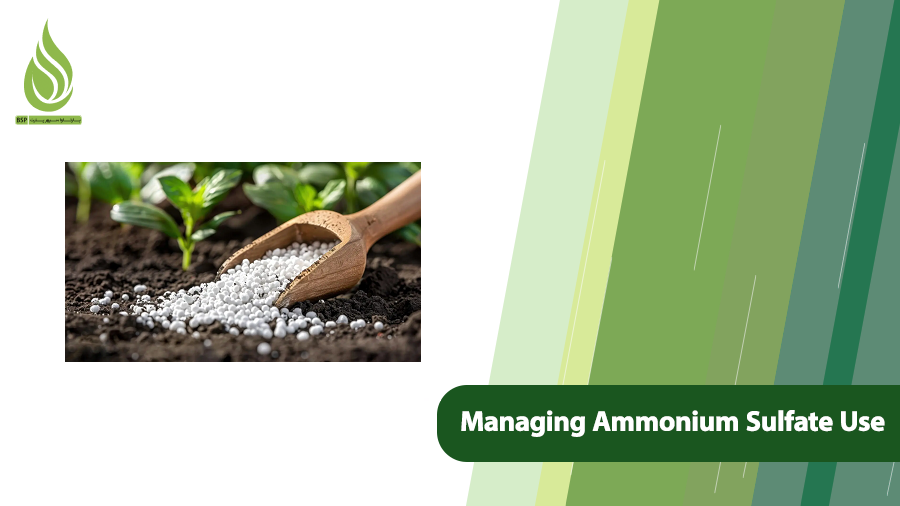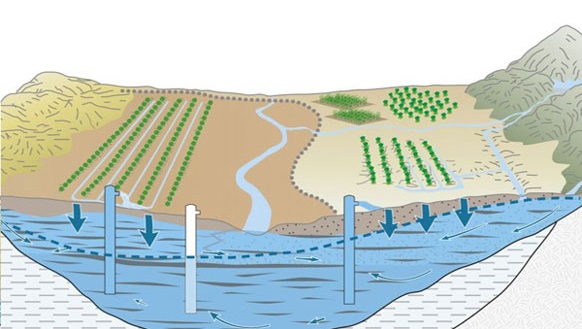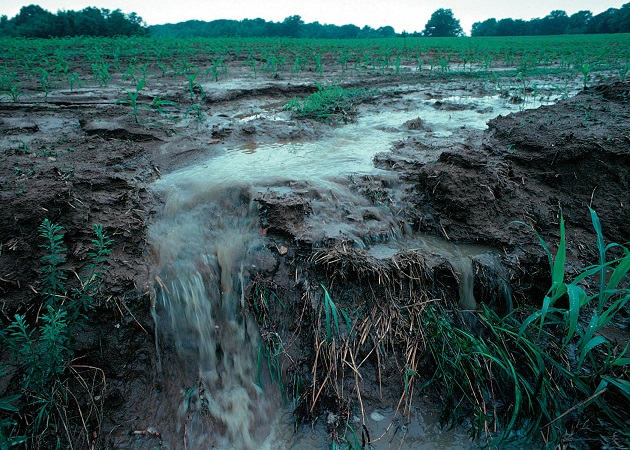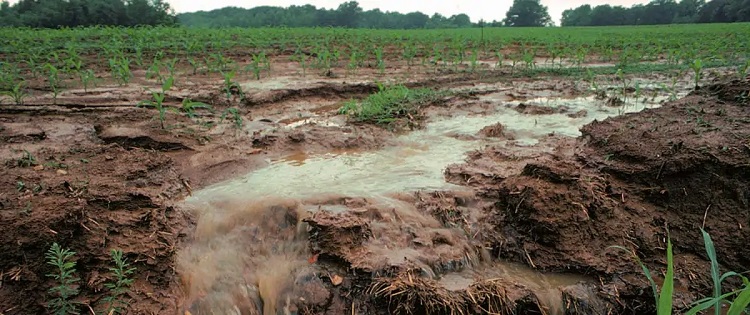
Managing Ammonium Sulfate Use to Prevent Groundwater Pollution
Chemical fertilizers, including nitrogen-based ones, have been a lifesaver for humanity. Without them, global food shortages would have likely reduced the world’s population by about 40% due to insufficient nutrients for crops. One particularly effective fertilizer for plant nutrition is ammonium sulfate. It plays a key role in boosting agricultural yields. However, excessive or improper use can lead to groundwater contamination, posing serious threats to environmental health. Managing ammonium sulfate use is essential for sustainable agriculture.
Chemical fertilizers, including nitrogen-based ones like ammonium sulfate, have revolutionized food production. Without them, global food shortages could have reduced the world’s population by about 40% due to nutrient deficiencies in crops. Ammonium sulfate stands out as an effective option for plant nutrition, containing 21% nitrogen and 24% sulfur. It significantly enhances agricultural productivity, but improper or excessive application is threatening ecosystems and human health. In this guide, we’ll delve into scientific and practical approaches for managing ammonium sulfate use.
The Importance of Chemical Fertilizers in Modern Agriculture
As the global population exceeds 8 billion, relying exclusively on organic sources like animal manure is insufficient to meet crop nutrient demands. Chemical fertilizers have thus become a cornerstone of agriculture, recognized worldwide as the most efficient type for large-scale production. They deliver numerous benefits that support food security and economic viability:
- Enhanced Food Security: Nitrogen fertilizers, including ammonium sulfate, sustain billions by enabling higher grain yields, credited with feeding half the world’s population.
- Boosted Productivity: They can increase crop outputs by two to three times on the same acreage.
- Superior Product Quality: Improvements in color, flavor, size, and marketability make produce more appealing.
- Quick Nutrient Delivery: Rapid absorption supports immediate plant growth, unlike slower organic alternatives.
- Precision in Nutrient Application: Allows exact dosing of elements such as nitrogen, phosphorus, and potassium.
- Convenient Handling: Compact and stable for easy storage and transport.
- Soil pH Adjustment: Acidifying fertilizers like ammonium sulfate help manage alkaline soils.
- Cost-Effectiveness: Higher yields translate to better farmer incomes.
- Customized Nutrition: Targets specific deficiencies, e.g., sulfur in depleted soils.
- Weed-Free: No introduction of unwanted seeds, unlike manures.
- Immediate Availability: No waiting for decomposition.
However, mismanagement can cause soil degradation, environmental damage, and health issues. Global nitrogen fertilizer consumption has surged from 3 million tons in 1960 to over 100 million tons today, heightening pollution risks without proper oversight. In most places, agriculture contributes significantly to nonpoint source pollution, with fertilizers fueling nutrient runoff into waterways and groundwater. Effective managing ammonium sulfate use is key to mitigating these effects.
Ammonium Sulfate: A Versatile Fertilizer for Crop Nutrition
Ammonium sulfate, an inorganic salt with the formula (NH₄)₂SO₄, serves as a premier source of nitrogen (21%) and sulfur (24%). Highly soluble in water (750 g/L), it provides quick nutrient release for robust plant growth. It’s widely applied to cereals, rice, vegetables, and other crops, particularly in flooded fields where it resists denitrification losses better than nitrate forms.

This fertilizer promotes higher-protein yields and improves soil quality by supplying essential elements for protein synthesis, enzyme activity, and chlorophyll production. Benefits include:
- Dual Nutrient Supply: Nitrogen and sulfur support plant health and disease resistance.
- Soil Acidification: Lowers pH in alkaline soils, enhancing availability of phosphorus and micronutrients.
- Improved Uptake: Boosts absorption of other nutrients.
- Efficiency in Wet Conditions: Ideal for rice paddies due to low leaching risk.
In regions like the U.S. Midwest, it’s favored for corn and soybeans to address sulfur depletion from modern farming. Crystalline Ammonium Sulfate fertilizer is better for broadcasting, side-dressing, or fertigation, and studies indicate it may reduce nitrate leaching compared to other N sources, aiding in managing ammonium sulfate use for environmental protection. However, repeated applications can over-acidify soil, harming microbes, so monitoring is crucial.
Factors Contributing to Groundwater Pollution
Groundwater contamination arises from multiple sources, complicating environmental management:
- Petroleum Spills: Hydrocarbons from leaks.
- Agricultural Overuse: Excess fertilizers leaching nutrients.
- Industrial Waste: Improper disposal near aquifers.
- Mineral Extraction: Release of heavy metals.
Agriculture is a primary offender, with overuse of fertilizers, pesticides, and herbicides introducing nitrates and residues underground. Nitrate pollution is a top concern for 30% of groundwater managers, exacerbated by heavy rains flushing unabsorbed nutrients. In urban settings, lawn fertilizers can release 80 times more nitrates than natural areas. Managing ammonium sulfate use involves addressing these to curb infiltration.

Negative Consequences of Ammonium Sulfate in Groundwater
Nutrient leaching transports ammonium sulfate components into water systems, yielding harmful effects:
- High Nitrate Levels: Risks like methemoglobinemia and cancer; EPA limits are 10 mg/L nitrate-nitrogen.
- Eutrophication: Algal blooms deplete oxygen, harming aquatic life.
- Soil Degradation: Loss of organic matter and excessive acidity.
- Biodiversity Impacts: Disruption of ecosystems.
In high-input farming, up to 40% of applied nitrogen remains in soil, vulnerable to leaching during storms, costing communities millions in treatment.
Strategies for Managing Ammonium Sulfate Use
Effective managing ammonium sulfate use requires precision to balance productivity and protection. Key BMPs include:
Soil Testing for Precise Needs

Annual soil tests, including deep sampling (6-24 inches), measure residual nitrogen and sulfur, guiding applications to avoid excess. If levels are sufficient, skip fertilization; otherwise, apply recommended doses based on crop yield estimates.
Timed and Split Applications
Apply in stages matching growth phases, e.g., one-third at planting for corn. Early spring or late fall timing maximizes uptake; avoid hot weather or pre-rain to prevent volatilization or leaching. We suggest you take a look at our guide to fertilizing after rain.
Application Rates and Methods
Typical rates: ½ pound per 100 square feet, adjusted via tests. Use foliar sprays or fertigation for direct delivery, reducing waste. Incorporate into soil promptly, especially in alkaline conditions, and water thoroughly post-application.
Combining with Stabilizers
Mix with nitrogen inhibitors or organics to slow release and minimize leaching.
Sustainable Practices
Employ crop rotation with nitrogen-fixers like alfalfa, cover crops to capture residuals, and drip irrigation to cut water use and pollutant migration. In high-risk sandy soils, extra caution with rates and timing is needed.
Storage and Handling for Safety
Store in dry, ventilated areas at least 150 feet from wells, using sealed, moisture-resistant packaging to prevent clumping or spills. Avoid blending with urea due to lowered critical relative humidity (CRH), which promotes moisture absorption. Use containment for large quantities, lock facilities, and train handlers to prevent contamination. During mixing, avoid wells, use anti-backsiphoning devices, and recycle rinsate on fields.
Fertilizer Compatibility
Verify mixing with other products; incompatible blends can reduce efficacy. In heavy soils, safer near-seed applications are possible, but always test. Buffer zones near water bodies further safeguard against runoff.
The Crucial Role of Soil Testing in Managing Ammonium Sulfate Use

Soil testing is pivotal for managing ammonium sulfate use, quantifying available nutrients and deficiencies. It prevents over-fertilization, cost overruns, and pollution. Factors like crop type, growth stage, climate, and soil pH influence needs, making blind applications risky. Test every 1-3 years via USDA or extension services for tailored recommendations, especially in alkaline soils where ammonium sulfate’s acidifying benefits shine, but monitor to avoid extremes.
Conclusion: Sustainable Managing Ammonium Sulfate Use for a Healthier Planet
Ammonium sulfate is invaluable for agriculture, but poor managing ammonium sulfate use endangers water resources. By adopting BMPs like soil testing, precise timing, sustainable techniques, and proper storage, yields can rise while protecting groundwater. This aligns with global sustainability goals amid rising fertilizer demands. Responsible practices ensure long-term environmental and agricultural health.
